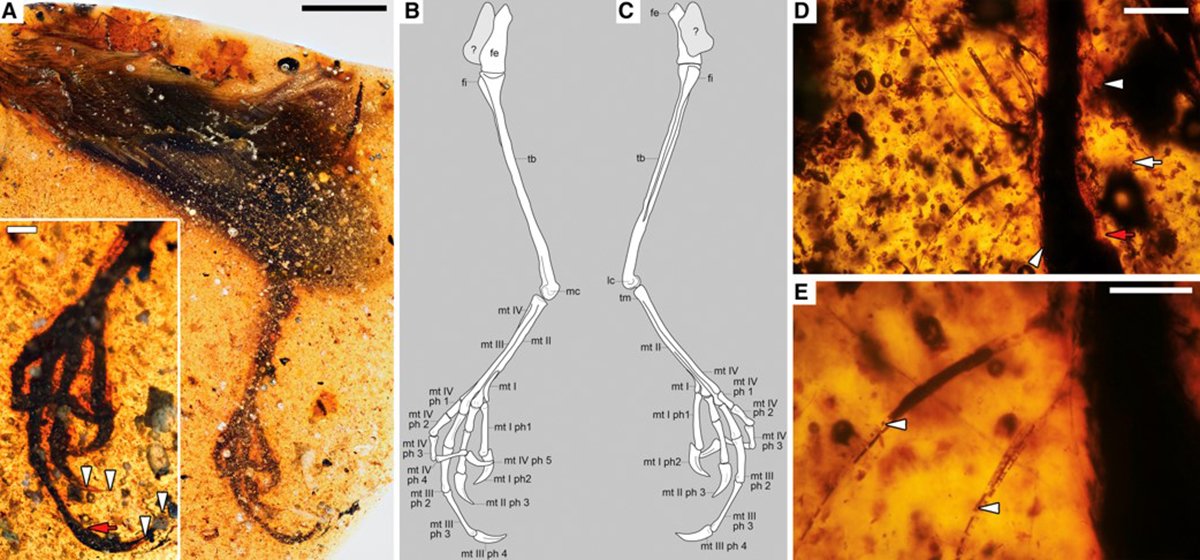Scientists discovered a fossilized bird with strangely long toes preserved in amber. They were baffled because the 99-million-year-old fossil has an extremely long third toe. New research sheds light on how such birds may have used their third toes and marks the first instance of this kind of foot being observed in birds, both living and extinct.
The new study was published in the journal Current Biology, and it suggests that this bird could use its third toe to pull food out of tree trunks.
“I was very surprised when I saw the amber,” first author Lida Xing of China University of Geosciences in Beijing said in a statement. “It shows that ancient birds were way more diverse than we thought. They had evolved many different features to adapt to their environments.”
Xing and his colleagues used micro-CT scans to scan the amber and made a 3D model to represent the fossilized bird with strangely long toes. The third toe measured 9.8 millimeters, which is 41% longer than the second toe and 20% longer than the tarsometatarsus, which is the bone in the lower legs of birds.
The researchers named the species Elektorornis chenguangi. “Elektorornis” means “amber bird” belonging to the group called Enantiornithes, which became extinct during the Cretaceous-Paleogene extinction event believed to have taken place 66 million years ago. That event also wiped out the dinosaurs.
These birds have no living descendants like other birds, and researchers believe Elektorornis was smaller than a sparrow and arboreal, which means it probably spent most of its life in trees.
“Elongated toes are something you commonly see in arboreal animals because they need to be able to grip these branches and wrap their toes around them,” co-author Jingmai O’Connor of the Chinese Academy of Sciences said. “But this extreme difference in toe lengths, as far as we know, has never been seen before.”
Xing obtained the fossilized bird with strangely long toes from a local amber trader, who didn’t really know which animal this “weird foot” belonged to.
“Some traders thought it’s a lizard foot, because lizards tend to have long toes,” Xing said. “Although I’ve never seen a bird claw that looks like this before, I know it’s a bird. Like most birds, this foot has four toes, while lizards have five.”
In the future, the team plans to extract the proteins and pigments from the feathers that were etched on the surface of the amber. According to Xing, such data is important because it could help researchers understand how this bird adapted to the environmental changes and whether it could camouflage to confuse its predators.





